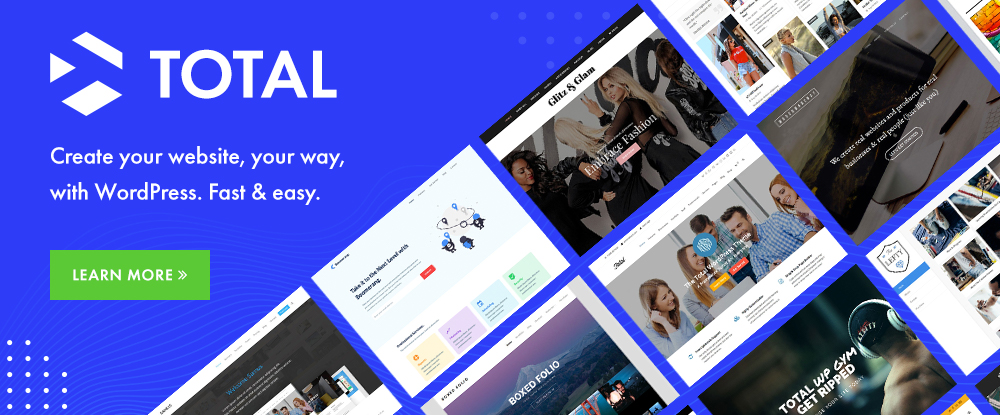How The Clubhouse Phenomenon Could be Utilized as a Marketing Strategy
From running campaigns to building a vibrant community, here's how to tap into Clubhouse's potential to boost your marketing efforts. The post How The Clubhouse Phenomenon Could be Utilized as a Marketing Strategy appeared first on Social Media Week.

If you don’t happen to be familiar with the unique audio-based social network, Clubhouse, don’t worry, you’re not alone. Many haven’t had the chance to use it because they’re either not on an iOS device or they haven’t received an invite. However, it’s likely that marketers will soon wake up en masse to the potential of this platform as a unique opportunity to win new leads and leverage fresh conversions for their business.
Despite launching in May 2020, by the end of the year Clubhouse was enjoying having over 600,000 registered users, despite a lack of presence on Android devices and online.

(Image: Backlinko)
As we can see, in early 2021 Clubhouse downloads have spiraled past six million thanks in no small part to Elon Musk’s advocacy of the platform. The growth of Clubhouse appears set to continue to spiral due to the network’s unique invite-only framework, where users are unable to simply sign up to the app without first receiving a user invitation.

(Image: Backlinko)
While the vast majority of Clubhouse users are based in the US, the market is expanding rapidly across Germany, Japan, and the UK. Other English-speaking nations like Canada and Australia are experiencing an increasing number of downloads while Turkey’s relatively young population is among another significant nation of large early adopters.
But what actually is this new social media network that’s spent the past year steadily embarking towards global domination? And why could Clubhouse provide marketers with a golden opportunity to connect with their audience in a brand new way? Let’s look at how Clubhouse can be utilized as a marketing strategy:
What is Clubhouse
Clubhouse is a social audio chat app where users have the ability to tune into interviews, conversations, and discussions between people on various topics. Think of the platform as a podcast, or a streaming service like Twitch, only the content is live audio. Once the discussion has finished, the content is gone and there are no recordings available afterward.
For the time being, only existing users are capable of inviting others. This means that to sign up, users will need to know somebody who has already registered to the platform themselves to get in. Meanwhile, anybody can download the app on iOS to reserve a username – and then it’s a case of waiting to get an invite to dive in.
The reason behind this rather unique approach to Clubhouse stems from the fact that the creators are still developing the platform and working to develop safety features and guidelines ready for more broad adoption. When the app can handle large audiences, plans are in place to open it up for everyone to use.
This closed-circuit release of Clubhouse may have inadvertently – or indeed deliberately – become an excellent marketing ploy by its creators. The scarcity of invites has created a buzz around the app that may not have existed to the same extent if everybody had the chance to join in and eavesdrop on conversations from the word ‘go’.
Furthermore, a number of factors like the ongoing COVID-19 pandemic, the sustained popularity of podcasts, the free time that remote work has generated and general widespread video fatigue appear to have combined to make Clubhouse the ideal social app at the ideal time.
Ray Wang, Constellation Research principal analyst and founder described Clubhouse as “the modern version of AM talk radio democratizing a digital society. The other unwritten part of the business model is a way to reward content creators with a new platform.”
Clubhouse taps into the popularity of podcasts while allowing users to multitask as they engage in the app. Unlike with copy and video, listeners to audio can do tasks like exercising, cleaning, or checking our inboxes as we hear the individuals we follow talk live.
The Potential That Clubhouse Holds for Marketers
So, what makes Clubhouse a great fit for brands? The answer to this depends on your business, and what you’re looking to achieve from your campaigns.
At the moment, Clubhouse has displayed significant potential for boosting users as thought leaders and expanding audiences within their respective niche.
In terms of use cases, it’s been reported that some attorneys have already been able to find new clients via Clubhouse by using the platform as an opportunity to share their expertise and demonstrate their value to followers within dedicated rooms – while some brands have even begun sponsoring discussions on the app and sharing business insights in rooms of their own.
This appears to be the most significant benefit for brands. The platform is a hub for sharing knowledge and insight through the means of various discussions that can build on community connections. These demonstrators of value could hold significant value too with Clubhouse rooms currently seeing high levels of engaged, active users.
As a marketer, you could ensure that your brand sparks the right topic of discussion and use it to draw in a refined and engaged audience – helping, in turn, to boost your presence and maximize audience reach.
How to Run Campaigns on Clubhouse
While it’s reasonable to expect Clubhouse to introduce some form of advertising opportunities for businesses in the near future as the app grows, there’s real value in creating your own campaigns that are geared towards demonstrating expertise and engaging with a new audience.
By using Clubhouse to set up a room of your own, you can use the app to grow your own community of followers who are interested in your business’ content and thus more likely to act on their interest and make a purchase. To get started on Clubhouse – assuming that you’ve managed to access an invite – here’s a step-by-step guide to building your own room:
1. Find People, Rooms, and Clubs to Follow

(Image: Social Media Examiner)
One of the most significant things you can do as a marketer on Clubhouse is to be strategic with who and what you follow. Following too many random accounts can lead you to have access to too many rooms that you’re not interested in. Take care in who you follow – the hallway will generally show you only rooms that match your perceived interests.
2. Begin Building a Vibrant Network of Users

(Image: Social Media Examiner)
When you enter rooms, you’ll see a breakdown of the individuals around you. The people in the room are broken down into three categories. Firstly, you’ll have the stage which consists of those speaking to the audience. Then, there’s the front row. The front row consists of the individuals in attendance who the speakers themselves follow. Finally, the third section is the audience.
When you click on the people on the stage and the front row, you can access information about them. This can help you to determine who to follow and how you can build your connections within the app.
3. Optimize Your Portfolio to Build a Following
Your Clubhouse bio is where you can tell your audience exactly what you want to be known for. What you include in your bio will play a key role in how people find you in the member directory, so be sure to use a healthy array of keywording to get you noticed.
Rather than a traditional online bio, invest time in creating an extended informational bio, and don’t be afraid to include emojis. Here, you want to stand out. Mention where you work, your title, content channels, and social profiles – as well as any clubs you’ve already launched.
To build a following, enter rooms that are relevant to your industry and get to know the people who regularly visit them. As you get more active and show up more, the people who host those rooms could invite you to come on stage where your audience will notice you. The more time you get on stage, the more followers you’ll attract.
Don’t waste time when you’re talking. Don’t introduce yourself or your field of work, or even your business. Simply ask or answer a question clearly and succinctly and offer value based on your expertise alone. When you effectively engage with your audience, they’ll feel compelled to click on your bio and read more about yourself and your business.
4. Begin Hosting Your Own Rooms on Your Terms

(Image: Good Housekeeping)
When you create a room, you automatically become a moderator for that room. As a moderator, you can control who comes up on stage, who gets muted, and who can join you in the role of moderator.
Here, your goal is to bring order to the room and anticipate what the audience wants and needs. Sometimes that could mean taking a short break, where you can ask your audience to give moderators a follow. When the audio content resumes, you can even suggest listeners ping their contemporaries into the room to listen along.
Having your own room means that you get to curate your content. You can invite your business’ industry experts to the stage in a bid to demonstrate why their knowledge can be a vital component in earning clients money, or you can tap into the diverse qualities of Clubhouse’s global audience by including voices from all around the world.

(Image: WikiHow)
To start a room, all you need to do is to create an event and schedule it. There are two caveats to creating your room that need to be addressed. Firstly, it’s important to ensure that you’ve networked enough to begin drawing an audience into your room. Preaching to an empty room can be a waste of valuable time spent on campaigns elsewhere.
It’s also key to ensure that your room is scheduled well enough in advance and at a convenient time that doesn’t clash with any competitor discussions that could take your audience away from you.
Building a Vibrant Community With Clubhouse
The explosion of Clubhouse onto the social media scene has come at a time when users are looking to favor companies with authentic and trustworthy branding rather than corporate giants with decades of accumulated brand loyalty.
The COVID-19 pandemic has brought with it a time of deep financial uncertainty and a steady stream of news events. In this era, consumers want to find confidence in brands that appear to share the values of their consumers. In creating live, uncensored and unscripted rooms through Clubhouse, your brand has the chance to demonstrate genuine value while offering users the chance to benefit from your expertise for free.
HubSpot’s social media community manager, Krystal Wu explained that “Clubhouse offers a lot of opportunities for connection with celebrities, a vast variety of people in different industries, and even close friends. It opens the door for live conversations allowing people to be vulnerable within a community space. This type of connection is unique to deliver audio content with small to large groups of people. Its unscripted content that anyone can be a part of.”
By setting up rooms to discuss your industry and your brand’s position and potential to deliver leading service, it’s possible to win dedicated fans and followers who are more likely to reward your willingness to share your knowledge by choosing your business to make a purchase.
As marketers utilize this early and largely untapped market, it’s vital to bring in analytics platforms to observe your progress. Insights provided by Google Analytics and Finteza can map how audiences receive your Clubhouse content and use it to inform their purchasing decisions. You can build a custom funnel that will show you exactly how visitors from Clubhouse navigate and behave on your website, how many of them convert and where they exit.

Through studying the flow of traffic and subsequent conversions, you can make informed decisions on how to approach the market and how much time to commit to the app.
Brands that use Clubhouse have a brand new opportunity to earn credibility by discussing topics that they’re experts on. However, they could also earn greater trust because they’ve made themselves available to listen and talk candidly with their audiences.
This level of trust-building with potential customers is a chance that shouldn’t go begging in the value-driven climate of 2021.
Join 100,000+ fellow marketers who advance their skills and knowledge by subscribing to our weekly newsletter.
The post How The Clubhouse Phenomenon Could be Utilized as a Marketing Strategy appeared first on Social Media Week.



























